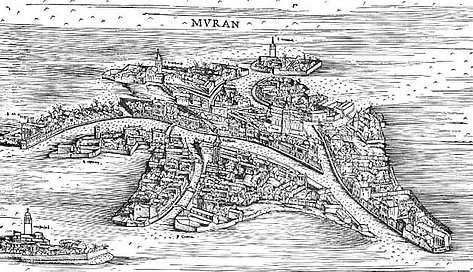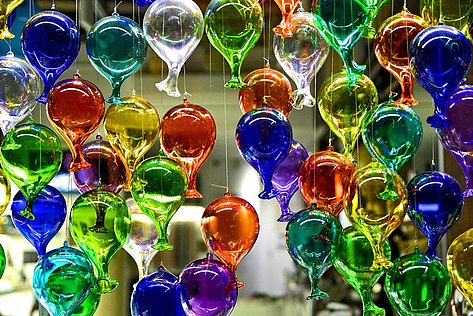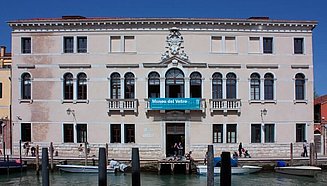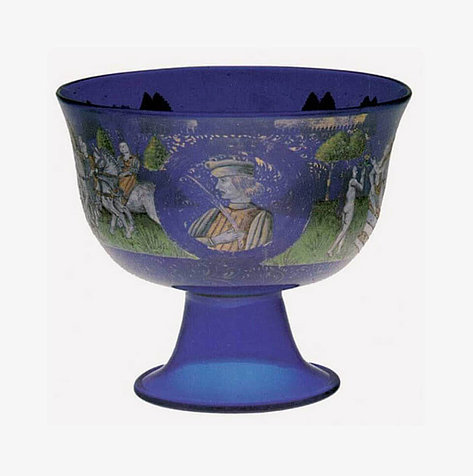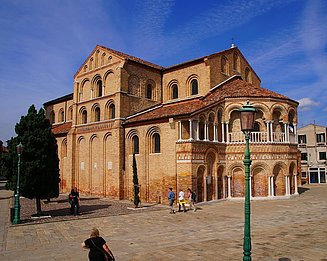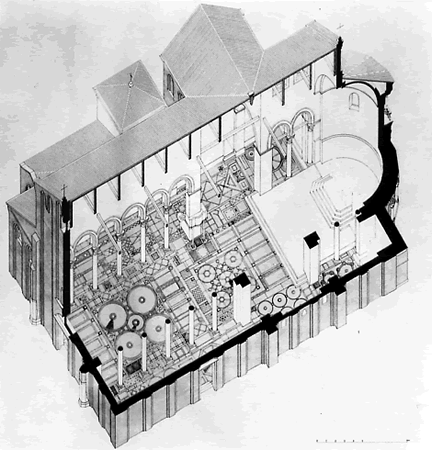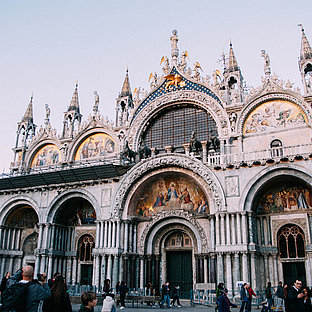Murano: The glass-blowing island #veniceclassics
3 min readHistorical origin
Murano, like many of the islands in the northern lagoon, was founded by Romans who fled in the late 5th century before the fall of the Roman Empire and the barbarian invasions. Although historical evidence suggests that glass production has been in the lagoon since the 6th century, the early economic activity of the island of Murano have been fishing and salt trading.
During the early years of the Republic of Venice, the territory called "Murano" also included the islands of Saint Erasmus, Vigole and San Michele. The territory of Murano had its own Grand Council, which was similar to the "Council of Ten" of Venice, and even minted its own coin. It was only from 1200 AD that Murano was ruled by a "podestà" (judge) of Venice.
Glass art
The production of glass has a very long tradition in Venice. The first glass in Venice was probably made just before the year 1000 AD. However, there was a problem since the beginning: Large, very hot ovens are required to manufacture glass. These caused fires many times, sometimes entire neighborhoods burn down. There was a long discussion about what to do, the glass industry was booming and was an important industry in Venice in the 12th and 13th century. In 1295, the Doge decided to ban the glass factories in the old town of Venice and to relocate all glass ovens to the island of Murano, just a kilometer away.
The glass factories quickly became the most important industry on the island of Murano. Many of them are still runnning today. For centuries, Murano was the leading place for glass production in the world and the secrets of glass manufacturing such as production techniques, colors, etc. were well kept. For a long time, every maestro of glass making was forbidden to leave Venice for life. Abuse of this law sometimes even resulted in the death penalty.
Glass making
The concentration of glass production on Murano made it possible to continuously refine the recipes and the techniques used. The work of a master is like that of a chemist, whose secret formulas create a unique material. The ingredients quartz sand, lime, soda, potash, feldspar and aluminum oxide must be composed precisely in order to achieve optimal melting properties and the special coloring of the Murano glass. The master is the only one who has the exact formulas for glass production. These are traditionally passed on from father to son for generations. But it is not only the knowledge of the composition of the mixture that makes a master. It is his artistic skills that allow him to create glass masterpieces.
The island of Murano lives mainly from tourism today. Therefore, many glass manufacturers are happy to show interested guests how their works are made.
Glass museum - Museo del Vetro
The glass museum is located in the Palazzo Giustiniani, built on the island of Murano in 1659 as the seat of the then bishop of Torcello Marco Giustiniani. The interior of the main room is decorated with a famous fresco by Francesco Zugno. The entire building was extensively renovated over a period of several years; the work was only completed in 2014. The museum, which was founded in 1961, has grown since it opened thanks to the many donations from local glass manufacturers. With exhibits from antiquity to modern times, there is an insight into the history and manufacture of glass. Marvel at pieces from ancient Greece, antiques from the 20th century and models from the present.
One of the highlights of the museum is the 15th century Coppa Barovier. The large, dark blue chalice was a noble wedding present at the time. It is decorated with gold and some figures. The Barovier mug is so well known that copies in various sizes are now available in many shops on the island of Murano. The garden that belongs to the palazzo of the museum is definitely worth a visit.
Chiesa dei Santi Maria e Donato
A special attraction on the island of Murano is the Church of Santa Maria e Donato on the Fondamenta Giustiani. The church was built in the 7th century with a remarkable Byzantine mosaic, redesigned in the first half of the 12th century and completed in 1140 in its current form. A wonderful floor mosaic with floral motifs dates from this period. The mosaic in the apse and the gilded icon of Saint Donatus in the left aisle and the free-standing square bell tower (campanile) are worth seeing. According to the order the actual entrance side of a basilica is oriented to the west. The aim of this church was not to impress the locals but the guests arriving from the sea side on the east. Therefore, the east side of the church, the choir area, is the actual show side. The choir area is very representative: with striking white columns, a two-story arch structure has been erected. On the first floor, the arcade structure of the ground floor is repeated in the surrounding gallery. Very similar arch shapes encircle the entire front side on several floors, either as a walk-in gallery or as a window frame or just as a sequence of arcades.

